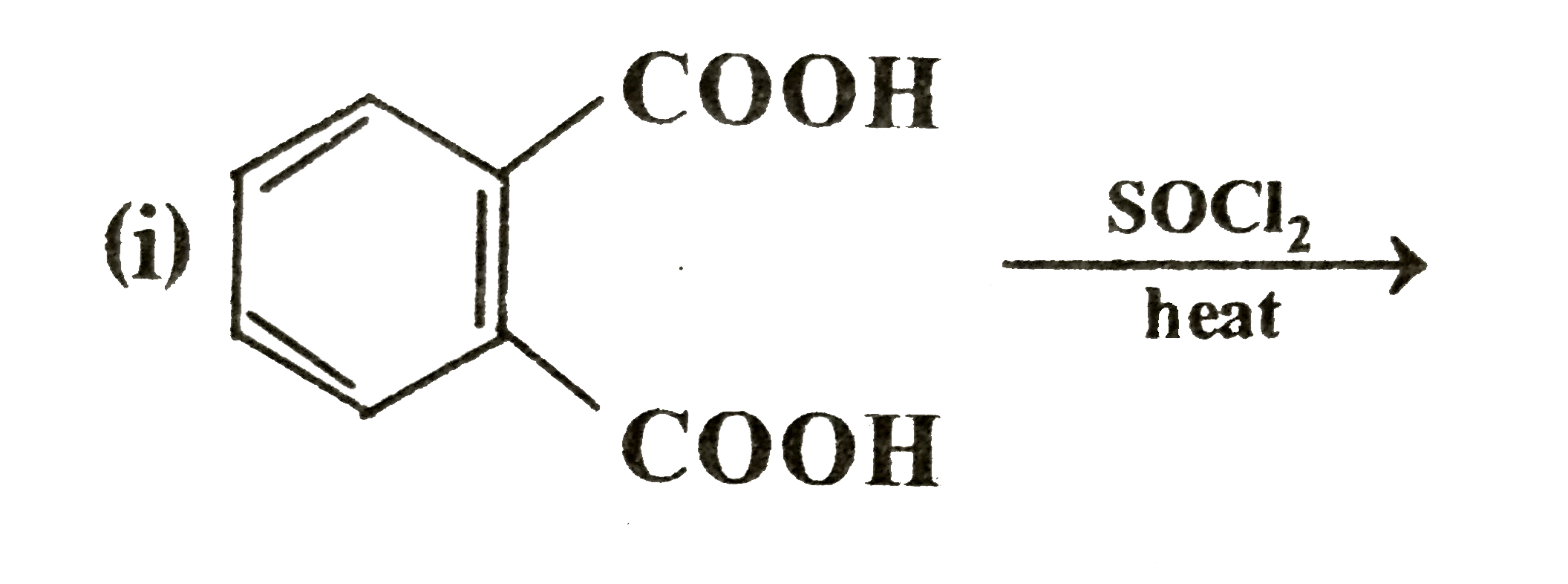Give the chemical test of distinguish between : CH3CHOandC6h5CHO.
To distinguish between acetaldehyde (CH₃CHO) and benzaldehyde (C₆H₅CHO), we can use the Fehling's test. Here’s a step-by-step solution:
Step 1: Prepare Fehling's Solution
Fehling's solution is prepared by mixing two solutions:
- Fehling's A: A solution of copper(II) sulfate (CuSO₄).
- Fehling's B: A solution of sodium hydroxide (NaOH).
Step 2: Add the Aldehyde
Take a small amount of each aldehyde:
- Acetaldehyde (CH₃CHO): Add a few drops of acetaldehyde to one test tube containing Fehling's solution.
- Benzaldehyde (C₆H₅CHO): Add a few drops of benzaldehyde to another test tube containing Fehling's solution.
Step 3: Heat the Mixture
Gently heat both test tubes in a water bath.
Step 4: Observe the Reaction
- For Acetaldehyde (CH₃CHO): A brick-red precipitate of copper(I) oxide (Cu₂O) will form, indicating a positive result for the Fehling's test. This occurs because acetaldehyde is an aliphatic aldehyde and can be oxidized.
- For Benzaldehyde (C₆H₅CHO): No precipitate will form, indicating a negative result for the Fehling's test. Benzaldehyde is an aromatic aldehyde and does not undergo oxidation under these conditions.
Conclusion
The formation of a brick-red precipitate in the case of acetaldehyde and the absence of precipitate in the case of benzaldehyde allows us to distinguish between these two aldehydes.
---
Fehling's solution is prepared by mixing two solutions:
- Fehling's A: A solution of copper(II) sulfate (CuSO₄).
- Fehling's B: A solution of sodium hydroxide (NaOH).
Take a small amount of each aldehyde:
- Acetaldehyde (CH₃CHO): Add a few drops of acetaldehyde to one test tube containing Fehling's solution.
- Benzaldehyde (C₆H₅CHO): Add a few drops of benzaldehyde to another test tube containing Fehling's solution.
Gently heat both test tubes in a water bath.
- For Acetaldehyde (CH₃CHO): A brick-red precipitate of copper(I) oxide (Cu₂O) will form, indicating a positive result for the Fehling's test. This occurs because acetaldehyde is an aliphatic aldehyde and can be oxidized.
- For Benzaldehyde (C₆H₅CHO): No precipitate will form, indicating a negative result for the Fehling's test. Benzaldehyde is an aromatic aldehyde and does not undergo oxidation under these conditions.
The formation of a brick-red precipitate in the case of acetaldehyde and the absence of precipitate in the case of benzaldehyde allows us to distinguish between these two aldehydes.
Topper's Solved these Questions
- ALDEHYDES,KETONES AND CARBOXYLIC ACIDSBook:CBSE COMPLEMENTARY MATERIALChapter:ALDEHYDES,KETONES AND CARBOXYLIC ACIDSExercise:SHORT ANSWER -II TYPE QUESTIONS (3 MARKS)
Explore 44 Videos
- ALDEHYDES,KETONES AND CARBOXYLIC ACIDSBook:CBSE COMPLEMENTARY MATERIALChapter:ALDEHYDES,KETONES AND CARBOXYLIC ACIDSExercise:LONG ANSWER TYPE QUESTIONS (5 MARKS)
Explore 21 Videos
- ALDEHYDES,KETONES AND CARBOXYLIC ACIDSBook:CBSE COMPLEMENTARY MATERIALChapter:ALDEHYDES,KETONES AND CARBOXYLIC ACIDSExercise:VERY SHORT ANSWER TYPE QUESTIONS (1 MARK)
Explore 19 Videos
- ALCOHOLS, PHENOLS AND ETHERSBook:CBSE COMPLEMENTARY MATERIALChapter:ALCOHOLS, PHENOLS AND ETHERSExercise:LONG ANSWER TYPE QUESTIONS (5 Marks)
Explore 5 Videos
- AMINESBook:CBSE COMPLEMENTARY MATERIALChapter:AMINESExercise:5 MARKS
Explore 7 Videos
Similar Questions
Knowledge Check
For distinction between CH3CHO and C6H5CHO, the used regent is
AKCNBHCNCNH2OHDPCl5
Give one chemical test to distinguish between C2H5Br and C2H5CI.
View SolutionGive chemical test to distinguish between C6H5CH2NH2 and C6HNH2.
View SolutionDistinguish between : (i) C2H5OHandCH3CHO.
View SolutionDistinguish between : (ii) C6H5COCH3andC6H5CH2CHO.
View SolutionWrite tests of distinguish between :
(ii) C6H5−OHandCH3COOH.
View Solution(a) Given chemical tests to distinguish between the following :
(i) Benzoic and ethyl benzoate.
(ii) Benzaldehy and acetophanone.
(b) Complete each synthesis by giving missing regents or products in following.
(i)
(ii) C6H3CHOH2NCONHNH2−−−−−−−−−→
(iii)
View Solution(a) Write the structures of A and B in the following reactions :
(i) CH3COClH2,Pd−BaSO4−−−−−−−−−→AH2N−OH−−−−−−→B
(ii) CH3MgBr1.CO2−−−−−−−→2.H3O+APCl5−−→B
(b) Distinguish between :
(i) C6H5−COCH3 and C6H5−CHO
(ii) CH3COOH and HCOOH
(c) Arrange the following in the increasing order of their boiling points :
(i) CH3CHO,CH3COOH,CH3CH2OH
View Solution

